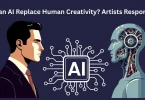Overview:
Accuracy issues frequently arise with handwriting recognition. Reading the handwriting of others can be challenging. So how will a computer accomplish this? There is a vast spectrum of handwriting, both good and awful, which is the problem. Because of this, it can be challenging for programmers to give enough examples of how each character might appear. Additionally, characters might occasionally have a lot in common, making it challenging for a computer to recognize them correctly. Another difficulty for computers is joined-up handwriting. Computers have a difficult time distinguishing distinct characters when all of your letters are connected. There are uncomfortable angles to take into account while recognizing handwriting from photographs. The character could be obscured by the camera angle, making it more difficult for the computer to recognize. Online and offline handwriting recognition systems are the two main categories. Applications can utilize any type. While some identification systems focus on identifying strokes, others focus on individual characters or whole sentences. System for extracting features from handwritten characters using neural networks.
Enhancing Handwriting Recognition with AI and Computer Vision
AI in collaboration with ML and computer vision improves handwriting recognition by understanding the meaning of handwritten text.
Deep learning techniques include patterning AI systems to learn from huge data sets, and handwritten samples coupled with text information. These algorithms are then used to identify and transcribe new forms of handwriting that are collected from the users.
Neural networks, deep learning models, and multi-dimensional recurrent neural networks are considered to be the key AI tools that can be applied for handwriting recognition. Neural networks are designed in the form of the brain and digitize handwritten data to convert it into textual form.
Deep learning offers this same capability in a manner suited to intricate patterns. The extension of RNNs like encoder-decoder networks and attention networks provides further improvements in accuracy by handling sequences and focusing on important features.
NLP algorithms also focus on the meaning and context of the handwritten text as opposed to the individual characters and include features such as the names or the dates.
Combined, handwriting recognition technologies use these AI technologies to provide accurate and rapid transcriptions, which further build upon their applications with improvements.
Algorithms for Character Recognition:
Image pre-processing, Feature Extraction, and Classification are the three areas under which character recognition systems fall. They are typically employed in that order: feature extraction requires feature extraction, which is required for accurate classification, while image pre-processing makes feature extraction easier.
Here is how they function
-
Image preparation
For accurate character prediction in the recognition pipeline, image pre-processing is essential. Typical examples of these techniques include noise reduction, image segmentation, cropping, scaling, and others. A scanned image is the initial input the recognition system accepts. JPG or BMT picture formats are both acceptable.
-
Segmentation
A series of characters are divided at the segmentation stage into a sub-image of each individual character. 3020 pixels are reduced for each character.
-
Recognition and Classification
The recognition system’s decision-making stage is at this point. The classifier has two hidden layers and trains its algorithm using a log sigmoid activation function.
-
Extraction of features
The measurable characteristics of observations that are utilized to analyses or categories these instances of data are the features of the input data. Finding pertinent traits that distinguish instances that are independent of one another is the task of feature extraction.
Optical Character Recognition:
Optical character recognition is known as OCR. It is used to identify text included within images, such as scanned photos and documents. Almost any type of image with written text can be transformed into machine-readable text data using OCR technology. In an effort to digitize old newspapers, OCR technology gained popularity in the early 1990s. The technology has advanced much since then. Today’s technologies provide OCR accuracy that is almost flawless. Complex document-based operations are automated using cutting-edge techniques like Zonal OCR. The handwriting recognition feature of OCR software is quite advantageous. A page of organized handwritten language may now be scanned and swiftly converted into a machine-readable document using OCR software handwriting recognition thanks to technological advancements.






Leave a Comment